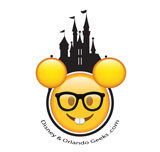Welcome to todays post where we’ll be exploring Disney’s milestones and achievements over the years.
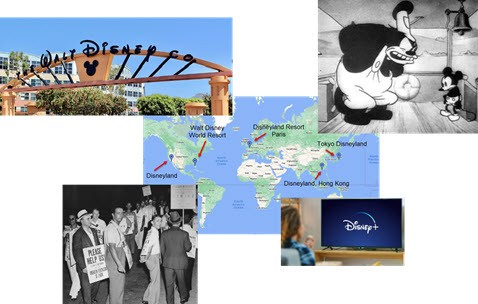
In 1923, Walt Disney, along with his brother Roy O. Disney, founded the Disney Brothers Studio in Hollywood. The studio started as a small animation company, producing a series of short films featuring a character named Oswald the Lucky Rabbit.
However, in 1928, Disney faced a setback when he lost the rights to Oswald. Undeterred, he and his team created a new character, Mickey Mouse, debuting in the ground breaking animated short film “Steamboat Willie” in 1928. Mickey Mouse became an overnight sensation and laid the foundation for Disney’s success.
Throughout the 1930s, Disney continued to innovate in animation, introducing synchronized sound in cartoons and releasing the first full-colour cartoon, “Flowers and Trees,” in 1932. The success of these early endeavours paved the way for Disney’s emergence as a leading animation studio.
Importance of Disney in Entertainment and Cultural History
Disney revolutionized animation by introducing synchronized sound, full-colour animation, and later, the first feature-length animated film, “Snow White and the Seven Dwarfs” (1937). These achievements set new standards for the industry.
The creation of iconic characters like Mickey Mouse and Donald Duck not only entertained audiences but became cultural symbols. These characters transcended the screen and found a place in the hearts of people worldwide, contributing to the cultural phenomenon known as “Disney magic.”
Disney’s commitment to storytelling and character development became a hallmark of its success. The emotional depth and timeless narratives in Disney films have resonated across generations, making Disney a storytelling powerhouse in the entertainment industry.
Beyond animation, Disney’s influence expanded to theme parks. The opening of Disneyland in 1955 marked the beginning of a new era in entertainment, where visitors could step into the enchanting worlds of Disney films.
Disney’s impact extends beyond the United States, acting as a cultural ambassador globally. The universality of Disney stories has transcended language and cultural barriers, making Disney a beloved and recognizable brand worldwide.
Disney’s commitment to wholesome family entertainment has set the standard for the industry. The company’s dedication to quality content that appeals to audiences of all ages has made Disney a trusted name in family-friendly entertainment.
The Birth of Mickey Mouse and the Start of Disney Animation

- Iconic Debut: Mickey Mouse made his historic debut in the animated short film “Steamboat Willie” on November 18, 1928. The short, directed by Walt Disney and Ub Iwerks, showcased Mickey as a mischievous and endearing character navigating the challenges of a steamboat.
- Synchronized Sound: “Steamboat Willie” was not only notable for introducing Mickey Mouse but also for being one of the first cartoons to feature synchronized sound. The integration of sound, music, and animation marked a ground breaking moment in the history of filmmaking.
- Instant Popularity: Mickey Mouse became an instant sensation, capturing the hearts of audiences with his cheerful personality, distinctive voice, and animated antics. This marked the beginning of a cultural phenomenon that would define Disney for decades to come.
Impact on the Animation Industry
- Revolutionizing Animation: The success of Mickey Mouse had a profound impact on the animation industry. Disney’s use of synchronized sound and the creation of a character with a distinct personality set a new standard for animated storytelling.
- Industry Recognition: “Steamboat Willie” received critical acclaim and industry recognition, earning Disney its first Academy Award nomination. This success signalled a shift in the perception of animation from a novelty to a legitimate and influential form of entertainment.
- Expansion of the Disney Brand: The popularity of Mickey Mouse paved the way for the expansion of the Disney brand beyond animation. Mickey became a cultural icon, appearing in comic strips, merchandise, and even inspiring the creation of Mickey Mouse Clubs for young fans.
Evolution of Disney’s Animation Techniques and Storytelling
- Technological Advancements: Disney continued to push the boundaries of animation technology. The introduction of Technicolor in “Flowers and Trees” (1932) brought vibrant colors to the screen, further enhancing the visual appeal of Disney’s animated films.
- First Feature-Length Animation: In 1937, Disney released “Snow White and the Seven Dwarfs,” the first-ever feature-length animated film. This ambitious project not only demonstrated Disney’s commitment to storytelling but also showcased the potential of animation as a medium for cinematic masterpieces.
- Development of Character Animation: Disney’s commitment to character development and animation techniques evolved over the years. The creation of multi-dimensional characters with distinct personalities became a hallmark of Disney films, contributing to the emotional impact of the stories.
- Expansion into New Genres: As Disney’s reputation in animation grew, the studio ventured into new genres, creating animated classics such as “Cinderella,” “The Little Mermaid,” and “The Lion King.” Each film brought its own unique storytelling style, further diversifying Disney’s creative portfolio.
Disneyland: The Happiest Place on Earth:
- Visionary Concept: On July 17, 1955, Walt Disney’s visionary dream became a reality with the grand opening of Disneyland in Anaheim, California. The park was not just a collection of attractions; it was a carefully designed immersive experience where guests could step into the enchanting worlds of Disney.
- Opening Day Challenges: The opening day, though marked with challenges and technical issues, was a significant moment in the history of theme parks. Despite initial setbacks, Disneyland captured the imagination of visitors and set the standard for themed entertainment.
- The Magic Kingdom’s Birth: Divided into different “lands” such as Adventureland, Fantasyland, Tomorrowland, and more, Disneyland became the prototype for modern theme parks. It offered a magical escape for families and individuals alike.
Innovations in Theme Park Design and Entertainment
- E-Ticket Attractions: Disneyland introduced the concept of E-ticket attractions, signifying the most thrilling and popular rides. This system revolutionized theme park experiences, encouraging the development of cutting-edge and immersive attractions.
- Audio-Animatronics: One of the most significant innovations was the introduction of Audio-Animatronics, blending technology and entertainment seamlessly. Attractions like the Enchanted Tiki Room and the Pirates of the Caribbean ride showcased lifelike, animated figures, adding a new dimension to theme park experiences.
- Parades, Shows, and Fireworks: Disneyland pioneered the concept of daily parades, live shows, and night time fireworks displays. These entertainment offerings became integral to the theme park experience, creating a sense of wonder and spectacle for visitors.
Expansion of Disney Theme Parks Globally

- Walt Disney World Resort: Building on the success of Disneyland, Disney expanded its theme park empire with the opening of Walt Disney World Resort in Orlando, Florida, in 1971. This vast resort introduced innovations like the monorail system and the Epcot theme park.
- Global Presence: Disney’s influence extended beyond the United States with the establishment of international Disney theme parks. Tokyo Disneyland (1983), Disneyland Paris (1992), Hong Kong Disneyland (2005), and Shanghai Disney Resort (2016) brought the magic of Disney to audiences around the world.
- Cultural Adaptations: Each Disney park globally has its unique features, adapting to the local culture while preserving the core Disney experience. This approach has allowed Disney to create a global community of fans who share a common love for the magic and imagination Disney brings to their lives.
Disney’s Contribution to the Film Industry
- Snow White and the Seven Dwarfs (1937): Disney’s first-ever feature-length animated film, “Snow White,” marked a ground breaking achievement. Its success not only established Disney as a leader in animation but also demonstrated the potential for animated storytelling on the big screen.
- The Lion King (1994): “The Lion King” became a cultural phenomenon, showcasing Disney’s ability to create timeless and emotionally resonant stories. The film’s success, both critically and commercially, solidified Disney’s reputation for producing animated classics.
- Innovation in Animation Techniques: Disney continued to push the boundaries of animation with films like “Fantasia” (1940), experimenting with combining animation and classical music, and “Beauty and the Beast” (1991), which was the first animated film to be nominated for a Best Picture Academy Award.
Disney’s Ventures into Live-Action Films
- Mary Poppins (1964): Disney made a significant mark in live-action filmmaking with “Mary Poppins,” a musical fantasy film that seamlessly blended live-action and animation. The film earned critical acclaim and multiple Academy Awards, demonstrating Disney’s versatility beyond animation.
- Pirates of the Caribbean Series (2003-2017): The success of the “Pirates of the Caribbean” film series showcased Disney’s ability to turn theme park attractions into successful movie franchises. The films, led by Johnny Depp’s iconic portrayal of Captain Jack Sparrow, became box office hits.
- Expansion of Genres: Over the years, Disney diversified its live-action film portfolio, exploring various genres such as fantasy, adventure, and family dramas. Films like “The Chronicles of Narnia” series and “Enchanted” demonstrated Disney’s commitment to captivating audiences with compelling live-action storytelling.
Acquisitions of Pixar, Marvel, and Lucasfilm
- Pixar (2006): Another one of Disney’s milestones was the acquisition of Pixar Animation Studios in 2006 not only brought beloved characters like Woody and Buzz Lightyear into the Disney family but also infused Disney with Pixar’s innovative storytelling and animation techniques. The collaboration resulted in hits like “Toy Story 3” and “Coco.”
- Marvel (2009): Disney’s acquisition of Marvel Entertainment in 2009 expanded the company’s reach into the superhero genre. The Marvel Cinematic Universe (MCU) became a blockbuster success, with films like “The Avengers” and “Black Panther” achieving both critical acclaim and massive box office success.
- Lucasfilm (2012): The acquisition of Lucasfilm brought the “Star Wars” franchise into the Disney fold. Disney successfully continued the “Star Wars” saga with new trilogies, standalone films, and TV series, showcasing its ability to steward beloved and iconic franchises.
- Integration and Cross-Brand Synergy: Disney’s strategic acquisitions allowed for cross-brand synergy, with characters and stories seamlessly integrated across various platforms, from theme parks to merchandise to streaming services like Disney+.
Disney’s Influence on Television
- The Wonderful World of Disney (1954): Disney made its mark on television with the introduction of “The Wonderful World of Disney,” a weekly anthology series that showcased Disney’s diverse range of content. It featured animated shorts, live-action films, and exclusive previews of upcoming Disney projects.
- Mickey Mouse Club (1955): A cultural phenomenon, the “Mickey Mouse Club” introduced a new format for children’s television. With a mix of animated and live-action segments, along with the famous Mouseketeers, it became a staple in households, showcasing Disney’s ability to connect with young audiences.
- TV Specials and Holiday Programming: Disney’s influence extended to special televised events, especially during holidays. Annual specials like “A Charlie Brown Christmas” and “Disney’s Christmas Day Parade” became anticipated traditions, solidifying Disney’s presence in the hearts of viewers during festive seasons.
Disney Channel and its Impact on Children’s Programming
- Launch of Disney Channel (1983): Disney’s foray into cable television marked a significant milestone with the launch of the Disney Channel. Initially a premium channel, it later transitioned into a standard cable offering, providing a platform for original programming that catered to children and families.
- Original Series and Movies: Disney Channel became known for its original series and movies that resonated with a young audience. Hits like “Lizzie McGuire,” “High School Musical,” and “Phineas and Ferb” showcased Disney’s ability to create engaging content for children and teenagers.
- Cultural Impact: Disney Channel not only entertained but also played a role in shaping the cultural landscape. It introduced young talents who would later become household names and addressed relevant themes, contributing to the development of a dedicated fan base.
Streaming Services: Disney+ and the Digital Era

- Launch of Disney+: In 2019, Disney entered the streaming wars with the launch of Disney+, a platform that brought together a vast library of Disney content, including animated classics, Pixar films, Marvel, Star Wars, and National Geographic.
- Direct-to-Consumer Approach: Disney’s move into streaming marked a strategic shift toward a direct-to-consumer model. By offering exclusive content on Disney+, the company adapted to changing viewer habits and the rise of digital streaming platforms.
- Original Content and Expanding Universe: Disney+ not only provided a home for existing content but also became a platform for new and original productions. Disney’s commitment to expanding its storytelling universe continued with series like “The Mandalorian,” “WandaVision,” and “Loki.”
- Global Reach and Accessibility: Disney+ expanded its reach globally, making Disney content accessible to audiences around the world. The platform’s success highlighted Disney’s ability to leverage its vast content library in the digital era.
Disney’s Impact on Pop Culture and Merchandising
- Mickey Mouse and Friends: From the moment Mickey Mouse burst onto the scene in “Steamboat Willie,” Disney characters became more than just animated figures. Characters like Mickey, Minnie, Donald Duck, and Goofy transcended the screen to become cultural symbols with enduring popularity across generations.
- Princesses and Fairy Tales: Disney’s introduction of princesses such as Snow White, Cinderella, and Ariel added a fairy-tale dimension to pop culture. These characters not only captivated audiences with their stories but also influenced fashion, ideals, and themes of empowerment.
- Cross-Generational Appeal: The timelessness of Disney characters has resulted in a cross-generational appeal. Grandparents, parents, and children share a common bond through the love of characters that have become synonymous with joy, imagination, and nostalgia.
Disney Merchandise and Its Popularity
- Merchandising Magic: Disney’s foray into merchandising set a precedent for the entertainment industry. The marketing of Disney characters on a wide array of products, from toys and clothing to home goods, created a merchandising empire that remains unparalleled.
- Theme Park Souvenirs: The creation of unique and exclusive merchandise at Disney theme parks became an integral part of the guest experience. From Mickey ears to collectible pins, these items not only serve as souvenirs but also as tangible connections to the magic of Disney.
- Collaborations and Limited Editions: Disney’s collaborations with various brands and artists have elevated its merchandise to high-end fashion and collectibles. Limited edition releases and special collaborations generate buzz and demand among collectors and enthusiasts.
Disney’s Role in Shaping Modern Pop Culture
- Influence on Fashion and Style: Disney characters and themes have made a significant impact on fashion trends. From clothing lines inspired by Disney princesses to character-themed accessories, Disney has left an indelible mark on the world of style and personal expression.
- Music and Soundtracks: Disney’s contribution to the music industry cannot be overlooked. Iconic soundtracks from films like “The Lion King,” “Frozen,” and “Moana” not only dominate charts but become cultural phenomena, with songs like “Let It Go” becoming anthems for a global audience.
- Cultural References and Homages: Disney is frequently referenced in other forms of entertainment, from TV shows to movies. Homages to Disney characters and stories are common, showcasing the company’s influence on storytelling and its integration into the broader cultural narrative.
- Social Media and Fandom: Disney’s presence on social media platforms has further amplified its impact on pop culture. Fandoms, fan art, and discussions surrounding Disney content thrive in digital spaces, creating a vibrant online community that continues to shape and celebrate the Disney legacy.
Philanthropy and Social Responsibility
- The Disney Conservation Fund: Disney established the Disney Conservation Fund in 1995, showcasing a commitment to wildlife and environmental conservation. The fund supports various projects worldwide, focusing on protecting habitats, conserving species, and connecting kids to nature.
- Children’s Hospitals and Charities: Disney has a long-standing tradition of supporting children’s hospitals and charities. Through initiatives like the Disney Team of Heroes program, the company aims to provide comfort and inspiration to children facing serious illnesses.
- Make-A-Wish Foundation Partnership: Disney has a strong partnership with the Make-A-Wish Foundation, granting wishes to children with critical illnesses. Disney theme parks are often the destination of choice for these wish experiences, emphasizing the company’s dedication to bringing joy to those in need.
Social Responsibility Initiatives and Environmental Efforts
- Environmental Stewardship: Disney has made strides in environmental sustainability. Theme parks implement eco-friendly practices, such as waste reduction and energy efficiency. The company has set ambitious goals, including achieving net-zero greenhouse gas emissions for its direct operations.
- Elimination of Single-Use Plastics: In alignment with global efforts to reduce plastic waste, Disney has taken steps to eliminate single-use plastics from its parks and resorts. This initiative reflects a broader commitment to environmental responsibility and the health of ecosystems.
- Green Building Standards: Disney incorporates green building standards in its construction projects. Buildings in theme parks and resorts are designed with energy-efficient systems, sustainable materials, and innovative technologies to minimize their environmental impact.
Positive Impact on Communities and Global Issues
- Community Engagement Programs: Disney engages in various community programs to make a positive impact. The Disney VoluntEARS program encourages employees to participate in volunteer activities, contributing to community development, education, and disaster relief efforts.
- Educational Initiatives: Disney invests in educational initiatives that empower young minds. Through programs like Disney Aspire, which offers educational resources and tuition assistance to employees, the company contributes to skill development and lifelong learning.
- Global Disaster Relief: In times of crisis, Disney has been quick to respond with support for disaster relief efforts. Whether through financial contributions, providing resources, or offering a platform for raising awareness, Disney plays a role in aiding communities affected by natural disasters.
- Representation and Diversity: Disney has made strides in promoting diversity and representation in its content. By featuring characters from diverse backgrounds and cultures, Disney contributes to positive conversations about inclusion and representation in media.
Challenges and Adaptations Over the Years
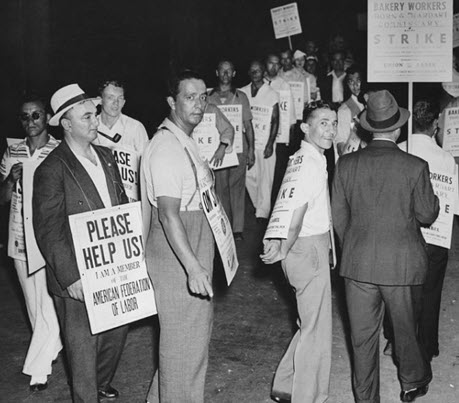
- Financial Struggles in the Early Years: Disney faced financial challenges in its early years, including the loss of the Oswald character and the financial strain of producing “Snow White and the Seven Dwarfs.” However, these challenges fuelled Walt Disney’s determination to innovate and succeed.
- Labour Strikes in the 1940s: During the 1940s, Disney experienced labour strikes that affected the production of animated films. Struggles between management and employees led to a re-evaluation of workplace policies and set the stage for improved relations in the years that followed.
- Competitive Challenges in Animation: Over the years, Disney faced competition in the animation industry. The emergence of other animation studios and changes in audience preferences challenged Disney to continually evolve its storytelling techniques and maintain its position as an industry leader.
- Theme Park Setbacks and Expansions: The opening day challenges of Disneyland in 1955 highlighted the difficulties of managing a theme park. Subsequent expansions and the opening of new parks globally presented logistical and cultural challenges, requiring Disney to adapt to different markets and expectations.
- Evolving Entertainment Landscape: The rise of home entertainment, video games, and digital media presented challenges to Disney’s traditional business models. Adapting to changing consumer behaviours required strategic investments in new technologies and digital platforms.
How Disney Has Adapted to Changing Cultural and Technological Landscapes
- Diversification of Entertainment Offerings: Recognizing the changing landscape, Disney diversified its entertainment offerings. Beyond animation and films, Disney expanded into television, theme parks, and later, digital streaming services. This diversification allowed the company to reach audiences through various mediums.
- Strategic Acquisitions: Disney’s acquisitions of Pixar, Marvel, and Lucasfilm were strategic moves to expand its storytelling universe and appeal to broader audiences. These acquisitions not only brought new creative assets but also allowed Disney to leverage established fan bases.
- Embracing Technological Innovations: Disney has consistently embraced technological innovations. From the integration of synchronized sound in the early days to the use of computer-generated animation in films like “Toy Story,” Disney has been at the forefront of adopting new technologies in the entertainment industry.
- Launch of Disney+: In response to the shift in consumer behaviour toward digital streaming, Disney launched Disney+, a direct-to-consumer streaming service. This move allowed Disney to adapt to the changing landscape of media consumption and compete in the digital era.
- Inclusivity and Representation: Responding to cultural shifts and societal changes, Disney has actively worked on promoting inclusivity and diversity in its content. This includes featuring characters from different backgrounds and cultures, contributing to positive conversations about representation in media.
- Environmental Sustainability: Recognizing the importance of environmental responsibility, Disney has implemented eco-friendly practices in its theme parks and committed to ambitious sustainability goals. This adaptation aligns with changing cultural values and the increasing emphasis on corporate responsibility.
Looking Toward the Future
- Film and Television Projects: Disney continues to invest in a diverse array of film and television projects. This includes the expansion of the Marvel Cinematic Universe (MCU) with upcoming films and series, new animated features, and live-action adaptations of beloved classics. The streaming platform Disney+ serves as a hub for exclusive content, with a robust lineup of original series and films.
- Star Wars Franchise Expansions: The Star Wars universe is set to expand with multiple projects, including new films, series, and animated content. Disney’s commitment to storytelling within the Star Wars galaxy aims to captivate existing fans while introducing the franchise to new audiences.
- Theme Park Developments: Disney theme parks are undergoing continuous updates and expansions. This includes new attractions, lands, and experiences to enhance guest satisfaction. Upcoming projects include the transformation of EPCOT at Walt Disney World, the Avengers Campus in Disney California Adventure, and the expansion of Disney Cruise Line.
- Cultural Inclusivity: Disney is expected to further its commitment to cultural inclusivity and diversity in its content. This includes featuring characters from underrepresented backgrounds and telling stories that resonate with a global audience. The emphasis on representation aligns with broader societal shifts and the demand for more inclusive storytelling.
Anticipated Developments in Disney’s Theme Parks, Films, and Other Ventures
- Integration of Technology in Theme Parks: Disney is likely to continue integrating cutting-edge technology into its theme park experiences. This may include advancements in augmented reality, virtual reality, and interactive elements to enhance storytelling and create immersive attractions.
- Global Expansion of Disney+: With the success of Disney+, the streaming platform is expected to continue expanding its global reach. New original content and partnerships are anticipated, positioning Disney+ as a major player in the competitive streaming landscape.
- Evolution of Disney’s IP Portfolio: Disney’s acquisition of 21st Century Fox further expanded its intellectual property (IP) portfolio. Anticipated developments include the incorporation of acquired franchises into various Disney ventures, such as theme park attractions, merchandise, and film and television projects.
- Innovations in Filmmaking Techniques: Disney has a history of pushing the boundaries of filmmaking techniques. Anticipated developments include advancements in animation, visual effects, and storytelling methods, potentially exploring new formats and technologies to create groundbreaking cinematic experiences.
- Environmental Sustainability Initiatives: Disney is likely to continue its focus on environmental sustainability. Anticipated developments include further reductions in single-use plastics, increased reliance on renewable energy sources, and the implementation of eco-friendly practices across all aspects of Disney’s operations.
Conclusion
In tracing the illustrious journey of The Walt Disney Company, we’ve witnessed a remarkable tapestry of achievements and Disney’s milestones that have left an indelible mark on the world of entertainment.
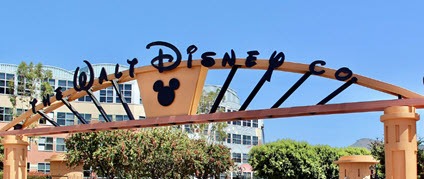
From the pioneering days of animation to the creation of timeless characters, the establishment of theme parks, and the strategic acquisitions that expanded Disney’s storytelling universe, the company has consistently been at the forefront of innovation and creativity.
Mickey Mouse’s debut in “Steamboat Willie,” the opening of Disneyland in 1955, and the ground breaking successes of animated classics like “Snow White and the Seven Dwarfs” and “The Lion King” all stand as testament to Disney’s unparalleled contributions to the entertainment industry.
The company’s adaptability to new challenges, such as labour strikes, financial hurdles, and changes in consumer behaviour, further underscores its resilience and determination to evolve.
The integration of Disney into various facets of pop culture, from television to merchandise and theme parks, has solidified its position as a cultural phenomenon.
With strategic moves like the acquisitions of Pixar, Marvel, and Lucasfilm, Disney has not only preserved its rich legacy but also embraced new narratives and characters, staying relevant in an ever-changing landscape.
Disney’s Lasting Legacy in Entertainment and Culture
As we conclude this exploration into Disney’s milestones, it’s evident that the legacy of The Walt Disney Company extends far beyond the realms of animation, theme parks, and cinematic achievements.
Disney has become synonymous with magic, imagination, and a commitment to family-friendly entertainment. Its characters—Mickey Mouse, Cinderella, Elsa, and more—have become cultural icons, transcending generations and borders.
The enduring popularity of Disney is not merely a result of financial success; it’s a reflection of the emotional connection forged with audiences around the world.
From the enchanting stories that tug at heartstrings to the innovative use of technology in theme parks and films, Disney has shaped the very fabric of global entertainment and culture.
As Disney continues to evolve, navigating new challenges and embracing emerging technologies, its commitment to storytelling, inclusivity, and environmental responsibility ensures that its legacy will endure for generations to come.
The magic of Disney, woven into the fabric of our cultural tapestry, remains a beacon of joy, inspiration, and dreams realized—an everlasting testament to the power of imagination and the enduring spirit of Walt Disney’s visionary dream.
Now It’s Your Turn
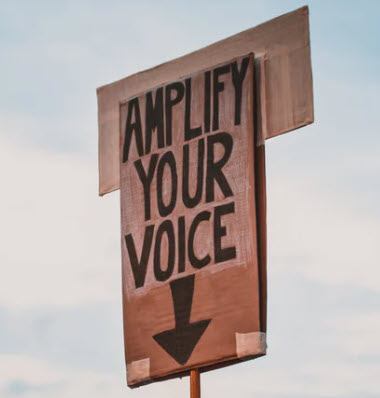
Now that we’ve embarked on this enchanting journey through Disney’s rich history, we want to hear from you!
Share your favourite Disney memories—whether it’s a magical visit to a Disney park, a cherished animated classic, or a heart warming experience with Disney characters.
Your memories contribute to the collective tapestry of Disney’s enduring impact on individuals around the globe.
Engage in the magic of conversation! Leave your thoughts, comments, and reflections below. What are your favourite Disney milestones?
How has Disney played a role in your life? Let’s create a virtual space filled with the joy and nostalgia that Disney has brought us over the years.
Feel free to share this post on your social media platforms. Let your friends, family, and fellow Disney enthusiasts join the conversation.
The more, the merrier! Together, let’s celebrate the timeless legacy of Disney and the countless memories it has given us.
Thank you for being a part of this journey into the heart of Disney’s history. Here’s to the magic that continues to inspire and connect us all!
